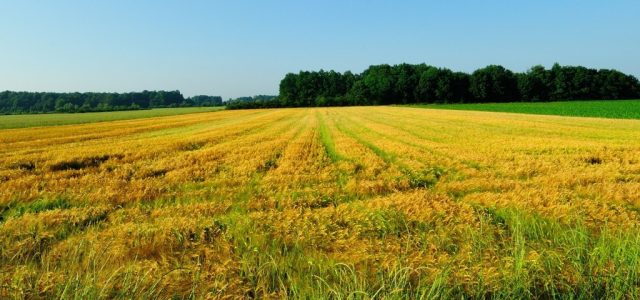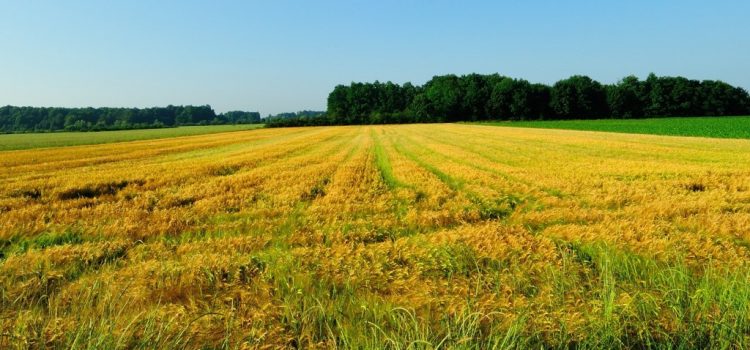


Every dollar invested in land in 1992 has increased 50 times today. Over the past 10 years (2004-2014) the increase in the value of land is up to 500%.
In March, just as each year, a list of the 100 richest Poles was released.
Instantly it reveals what the richest invest in. Land is listed as one of several investments in real estate, which is in the portfolio of the richest Poles. In surveys carried out by financial institutions, Poles generally put real estate in first place, regardless of the year in which the survey was conducted (and lately, one kind in particular which is land) as the most profitable and safest form of investing their own money.
Of course, there is still a long road ahead from words to action and various obstacles are often faced. Investment is associate with the need to have large amounts of cash or of the need to acquire knowledge on the subject. The reasons for investing in this type of investment, however, have remained unchanged.
The most important aspect is the limitation of this type of investment – land is a limited and unique resource which cannot be produced. Where demand and the supply is limited, the price increases. Another reason is the continued rise in prices in the last 22 years, and double-digit returns for the mere passage of time. Every dollar invested in land in 1992 has increased 50 times today. Over the past 10 years (2004-2014) the increase in the value of land is up to 500%. High returns are usually associated with high risk which, in the case of lands does not work because it is a commercial and tangible investment which, if confirmed a notary deed for the purchase of property, is a very secure capital investment. In addition, land is resistant to all kinds of turmoil in the financial markets, which has been perfectly illustrated by the recent crisis. As a matter of fact, the value did not fall but it has actually increased because many investors fled the falling financial markets for safe assets. Land is also inflation proof – no matter what kind it is, it still retains its value of money over time, giving a higher rate of return than inflation.
A unique feature of land distinguishing it from other investments is also its divisibility which makes it possible to raise the rate of return on investment – and increases profitability – often several times. Agricultural land is encased with low taxes and in some cases we can reduce taxes to zero. With all other investments in Poland, some kind tax has to be paid. This increases the return on investment. It is also a great security for your future or your relatives (retirement, college, change of jobs etc.). In this way you can become independent from the state social insurance system which is so uncertain today. Lands builds a lasting value that can be passed on as inheritance or as a donation. It can also be treated as a private retirement. It is also a prestigious investment, well perceived socially and can be even said to be trendy. And where trend has limited value, availability drops and prices invariably rise.
In Poland, there has been a noticeable surge in the value of land due to the ‘connected vessels’ process of states the old and new European Union states. In Poland land prices are much lower (sometimes several times) than in the so called ‘old’ European Union. Therefore, land prices are close to the prices prevailing in the developing European markets. The culminating moment will be the entry to the Euro zone. Additionally, restrictions on the acquisition of Polish land by foreigners in 2016 will be removed. Therefore, foreign capital which certainly will increase the price of land, will be a deciding factor in the battle for Polish land . This is shown by the example of other European countries which removed the restrictions for the turnover of land and prices began to rise sharply because the owners postponed the sale hoping to effect the removal of restriction which resulted in a decreased supply and increased demand.. At the same time land is the most underestimated asset for the goods and services market in Poland. In other words, everything else has increased faster than land.
Experts in the field predict continuation of the upward trend over the next 15-20 years. Growth will also be ensured by the increased need for food production along with the increasing population. So far, for 1 ha you had to feed approximately 2.4 people, but in 2050 this will be up 6.5 people. There are also new technologies such as photovoltaic systems, wind turbines, biofuels, which in principle require land, which further limits their supply. To sum up, the richest people in the world (including the wealthiest Poles) build or maintains their property and business in real estate, including land. Fortunately, however, the world is changing very quickly and investing in land no longer requires large amounts of money or extensive knowledge and through access to alternative forms of financing, you can obtain very high rates of return.
Additionally, restrictions on the acquisition of Polish land by foreigners in 2016 will be removed. Therefore, foreign capital which certainly will increase the price of land, will be a deciding factor in the battle for Polish land.
Przeczytaj ten artykuł w wersji polskiej: http://www.businessmantoday.org/grunty-inwestycj…na-niz-wszystkie/





